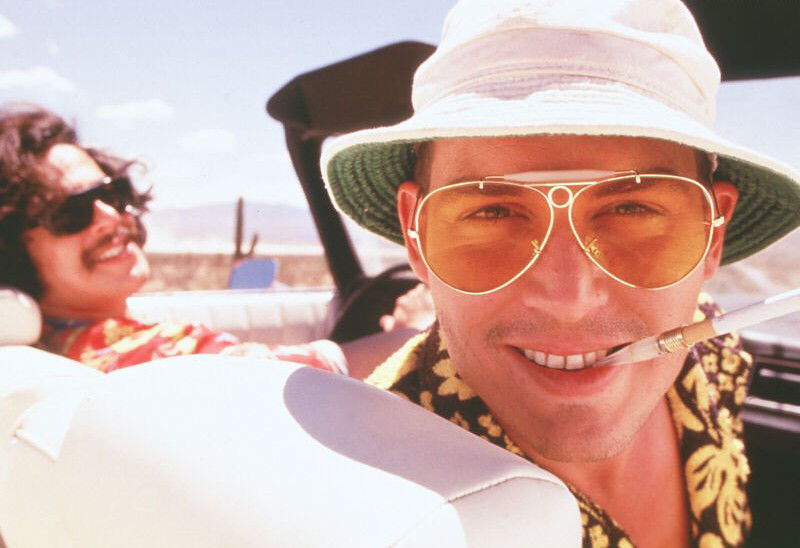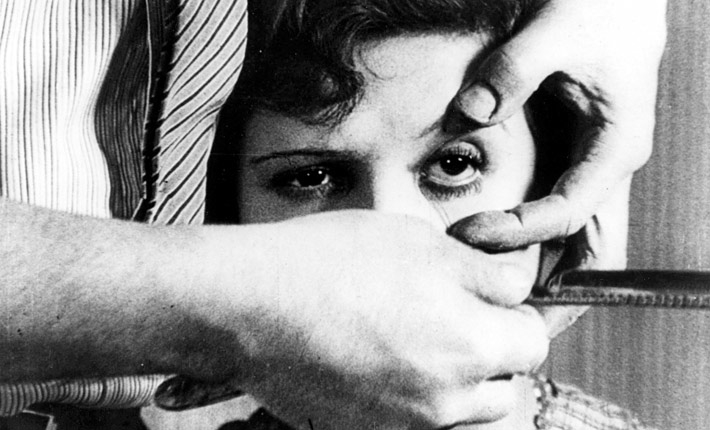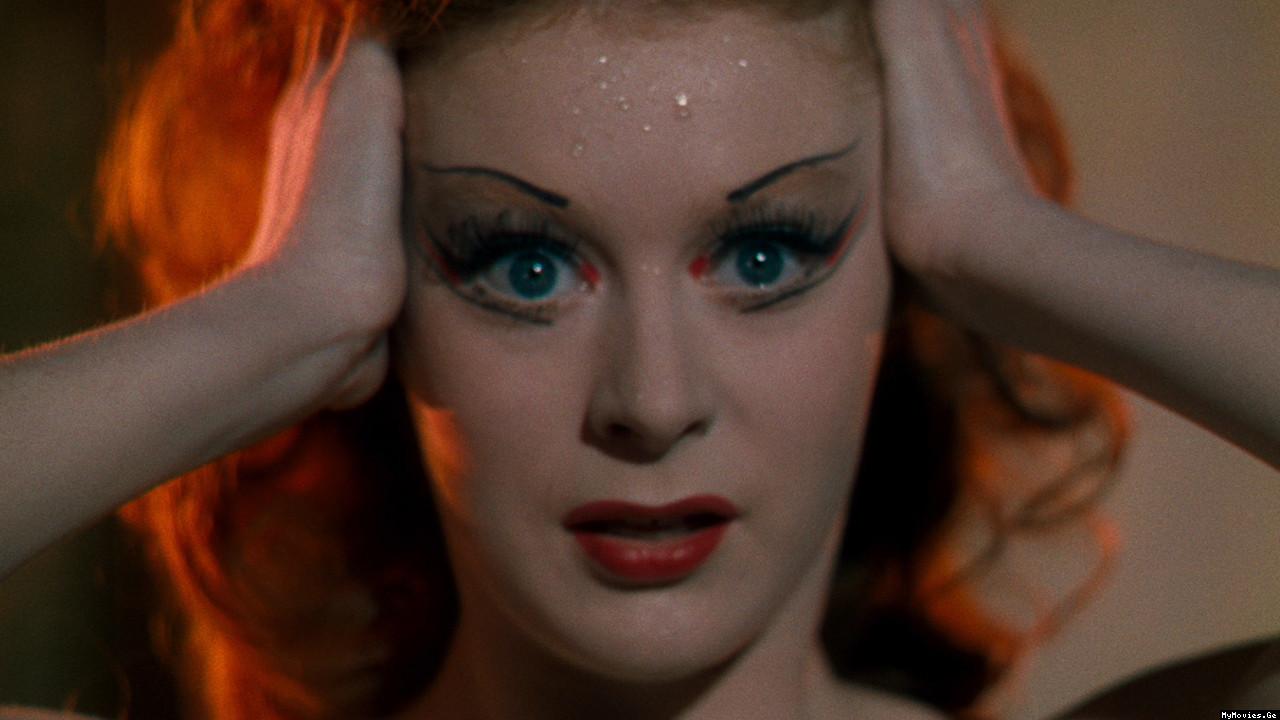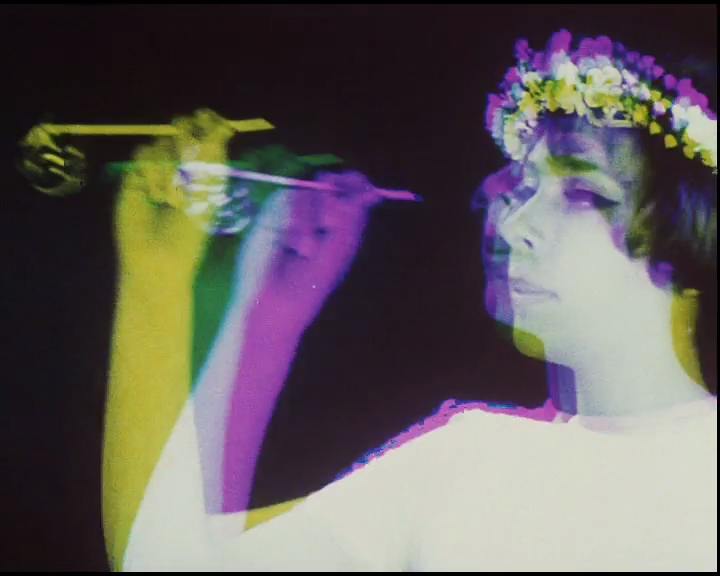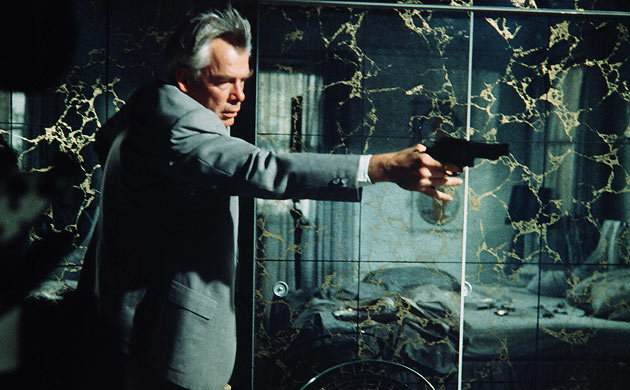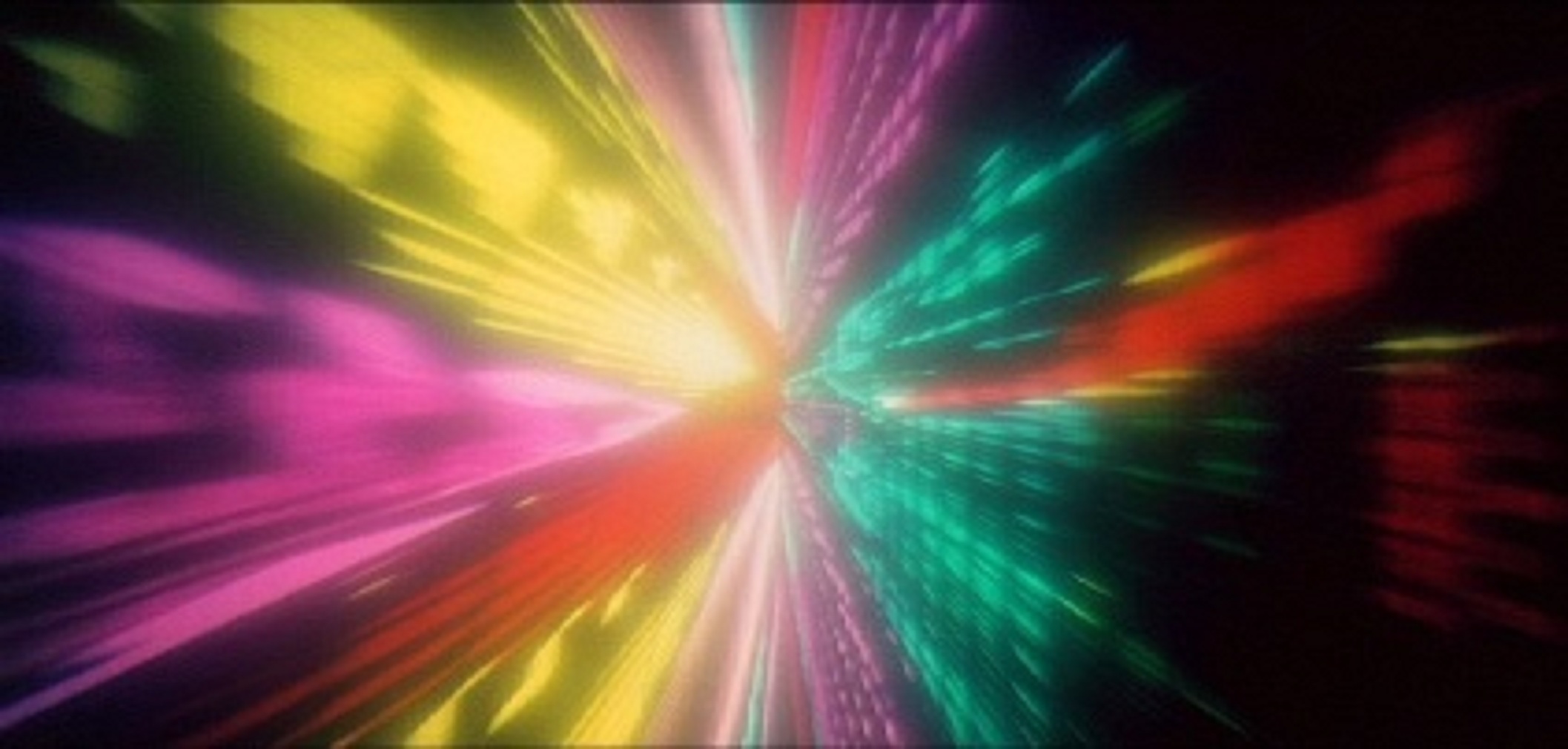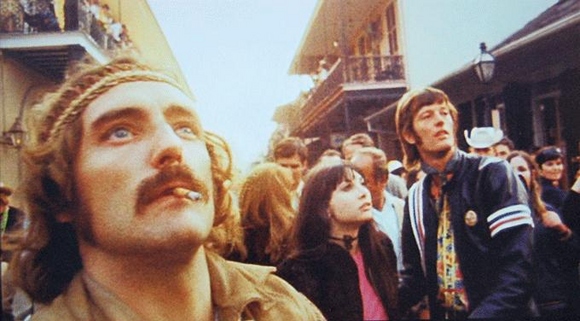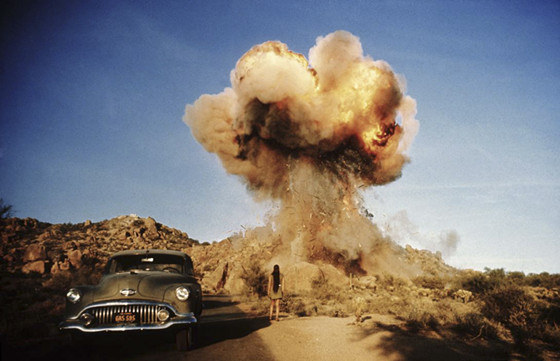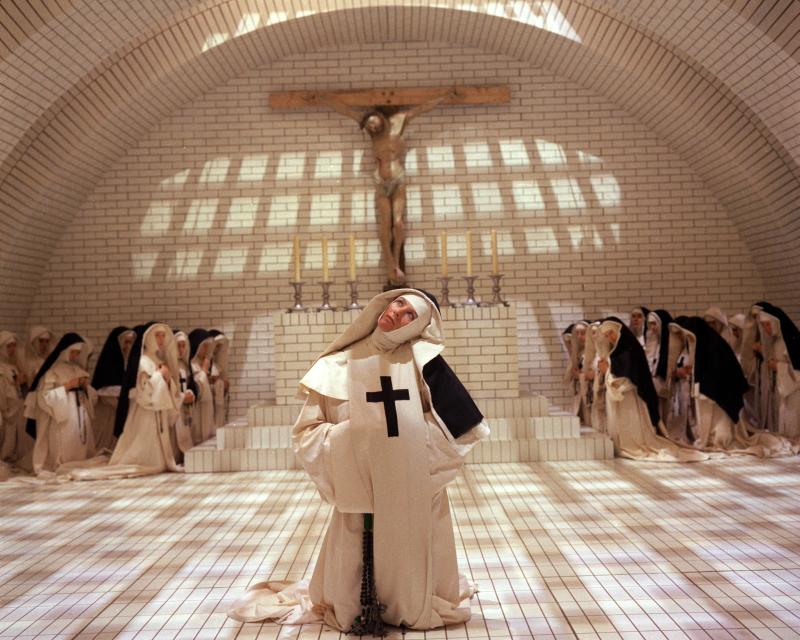Psychedelia in film is characterized by distortion (both in image and in sound), experimentation in narrative and editing, and sometimes drug-inspired hallucinations. Like the psychoactive drugs which produce heightened sensory perceptions and distortion, psychedelic films present to their audience an unfamiliar and/or dream-like view of reality.
The following films use cinematography, narration, editing, sound design, and music to create worlds of distortion. Whether the film is depicting drug-induced madness or creating an atomsphere of existential confusion, these films somehow experiment with the audience’s sensory perceptions in order to uproot the viewer from reality. These films welcome (or in some cases, force) the audience to interact with a plethora of psychedelic imagery, sounds, and/or narration.
1. Un Chien Andalou (1929) dir. Luis Buñuel
Even though Buñuel’s classic surrealist short film precurses psychedelia, the distorted narrative and dream-like imagery give it a psychedelic presence that influenced many films later on. His film is a perfect example of surrealism, a style of art which utilizes symbolism and the irrationality of the unconcious mind.
Un Chien Andalou was Buñuel’s first film, and was written in conjunction with Salvador Dalí, the prominent surrealist painter. The film opens with a barber slicing open a woman’s eye, as if to suggest to the viewer to symbolically throw off preconcieved notions and to see with new eyes.
The 20 minutes that follow are set to fragments of Wagner’s “Liebestod,” a dramatic piece of opera from Tristan und Isolde, that never quite comes to climax, making the film even more unnerving. Buñuel confuses his viewer by jumping back and forth in time with subtitles that proclaim “Eight years later” or “Sixteen years ago.”
There is no overt plot, but rather an amalgam of surrealistic images. We are presented with distorted religious symbology, such as ants crawling out from a stigmatic hand of the protagonist (a young unnamed man played by Pierre Batcheff), and dream-like scenarios- for instance, the young man dragging a piano topped with a dead donkey carcass and two priests in his pursuit of a young woman (Simone Mareuil).
Such images, surrealistic in nature, create a distorted sense of reality, a quality found in many psychedelic films.
2. The Red Shoes (1948) dir. Michael Powell and Emeric Pressburger
Michael Powell and Emeric Pressburger’s classic film The Red Shoes incorporates Expressionistic sets and costumes, subjective point of view shots, and passionate performances to tell the story of a young woman, dancer Victoria Page (Moira Shearer), torn between her love for a young man and her love of dance.
The dance sequence performed toward the end of the film captivates the viewer with its mesmerizing, painted landscapes and POV shots which sublty bring Victoria’s subconcious thoughts and fears to the forefront.
Victoria “Vicky” Page is a young talented ballet dancer, eager to join a company. She meets the fierce Boris Lermontov (Anton Walbrook), director of a renown ballet company. After realizing her talent in a small production of Swan Lake, Lermontov casts Vicky in his ballet of The Red Shoes, based on the Hans Christian Andersen fairy tale of a young woman whose red shoes possess her to dance to death.
Vicky then meets the young composer of the ballet, Julian Craster (Marius Goring) and the two fall in love, to the distress of Lermontov. Vicky is soon caught between the two men, forced to choose between the love of her life and her passion for her art.
Powell and Pressburger’s glorious Technicolor illuminates the passions of the film’s characters. The Oscar-winning sets provide an hallucinatory backdrop to the exceptional dance sequence, which brings Vicky’s fiery and tormented emotions to the limelight. The subtle POV shots during this sequence add to the psychological drama, and bring the viewer even further into Vicky’s mind.
A precursor of psychedelic filmmaking, The Red Shoes fuses hallucinatory elements into a mainstream film, which makes it a classic that continues to inspire modern filmmakers, such as Martin Scorsese and Brian de Palma.
3. Daisies (1966) dir. Věra Chytilová
Made during the Czech New Wave film movement by Czechoslovakia’s first female film director, Daisies is a revolutionary experimental film. Without following any real plot, the film is led by two impish young women as they whip up fun for themselves (and cause trouble in the process).
Věra Chytilová turns social mores on their head, as her two heroines, both named Marie (Jitka Cerhová and Ivana Karbanová) frolic through the film without a care. The two Maries laze around in bikinis and lingerie, create drunken mayhem at a nightclub, and destroy a fancy banquet, among other subversive acts.
The film explores different film stocks, spontaneous eruptions into collage, and otherwise consistently plays with the medium of film itself, creating a highly self aware piece of art. Banned upon release, the film depicts a destructive playfulness that Czech authorities apparently found dangerous. There is a political undertone to the film with World War II film stock intercut amongst the characters’ antics. Daisies stirs up the audience with its Puckish protagonists and psychedelic imagry and editing.
4. Point Blank (1967) dir. John Boorman
John Boorman’s neo-noir thriller, Point Blank is an hypnotic film of a man’s thirst for revenge. The pacing, color choices, and atmospheric music, led by Lee Marvin’s deadpan portrayal of Walker, yields a mesmerizing experience for the viewer.
Shot and left for dead on Alcatraz Island, Walker returns to San Francisco to take revenge and claim his half of a crime he helped commit. With the help of the mysterious Yost (Keenan Wynn), Walker sets off on his journey for retribution.
Along the way, he finds that the man who wronged him, Reese (John Vernon) not only stole his money and left him on Alcatraz, but he stole his wife Lynn (Sharon Acker), who is now a depressive, emotionless wreck living in guilt for double crossing Walker. After Lynn overdoses on sleeping , Walker finds Lynn’s sister Chris (Angie Dickinson) who helps him get closer to Reese.
The film’s pacing, which goes from a slow and moody atmosphere to periods of intense violence and action creates a lulling hypnosis which the viewer is then startled from. Color plays a role in the atmospheric tone of the film- for example, Lynn’s silver grey apartment reflects her drab unfeeling character, riddled with guilt.
Walker’s suits change color based on his location, giving him a mysterious chameleon-like quality. The story ends where it begins, on Alcatraz Island, leaving the film ambiguous as to whether the events that occur are a dream, reality, or if Walker is in fact a ghost.
5. 2001: A Space Odyssey (1968) dir. Stanley Kubrick
Stanley Kubrick’s science fiction masterpiece is an awe-inspiring, brilliant piece of art. The film’s stunning visuals combined with the grandeur of the classical music scores and György Ligeti’s haunting, dissonant avant garde music produces a filmic experience like no other. Kubrick’s exploration of the history and future of humankind excites the viewer’s senses as it leads us to confront the great unknown of space and time.
The film opens with the dawn of man as we witness the first protohumans utilizing tools for the first time in history. Through a graphic match cut, the prehuman tool becomes a spacecraft and we are transported to the future as humans have evolved and are now masters of their tools. The space craft is on a mission to investigate a mysterious object recently uncovered on a lunar crater.
A giant black monolith, also discovered on Earth by the protohumans earlier in the film, looms in this crater. We are to rediscover this black monolith again in the film. Next, we are on the Discovery One, a spaceship headed for Jupiter. Dr. David Bowman (Keir Dullea), Dr. Frank Poole (Gary Lockwood), and three other astronauts, in a state of cyrogenic slumber, are on a secret mission guided by the ship’s talking computer, HAL 9000 (voiced by Douglas Rain).
At this point, man loses control of his tools, as the computer’s intelligence superceeds that of the astronauts. Pitted against HAL, Bowman manages to take control of the ship and continues on the mission alone, traversing the wild unknown.
The film’s Beyond the Infinite sequence with its streaks of light in space and Ligeti’s dissonant chorus produce an intensely psychedelic experience. 2001’s enigmatic ending leaves the viewer spellbound and speechless. Kubrick exquisitely captures man’s existential journey into uncharted territory.
6. Easy Rider (1969) dir. Dennis Hopper
One of the America’s first counterculture films, Easy Rider captures the lifestyle of the hippie movement and how it interacts with the mainstream. Director Dennis Hopper and producer Peter Fonda also star in this pop culture hit as two hippie motorcyclists traveling through the American Southwest into the deep South. The film is not only historic in its depiction of the counterculture, but also in its realistic drug scenes (the actors actually injested the drugs their characters are shown using).
Wyatt (Peter Fonda) and Billy (Dennis Hopper) sell cocaine to a dealer and use their earnings to fund their roadtrip to New Orleans for the upcoming Mardi Gras celebration. Along the way, the two pick up a hitchhiker who lead them to a commune, filled with young hippies practicing free love and shared living.
Continuing on their journey, the two are arrested in a local town for “parading without a permit.” There, Wyatt and Billy meet George Hanson (Jack Nicholson), a drunkard lawyer in jail. George helps them out of jail and the three of them resume their pilgramage to Mardi Gras. The three are confronted with the ignorant, “square” communities in the South, who see the trio’s presence as a threat.
The film does an amazing job capturing the sociopolitical climate of the time. We see firsthand how feared the hippies were to mainstream culture, and how the counterculture was driven by a yearning for freedom. The scenes depicting drug use, especially the cemetary sequence in which Wyatt and Billy drop acid with two prostitutes, Karen (Karen Black) and Mary (Toni Basil), give the film an intense and disorienting component.
The unscripted LSD scene involves jump cuts, displaced, fear-filled and remorseful dialogue, and a mix of distorted imagery, such as the use of a fish-eye lense and close-ups of the sun. The psychedelic scenes mixed with the documentary style realism gives the film a palpable sense of the time.
7. Zabriskie Point (1970) dir. Michelangelo Antonioni
One part documentary-like realism, one part fanciful psychedelic desert trip, Antonioni’s American film offers its audience various aspects of life during the height of the counterculture. Although not critically well received, Antonioni’s cult classic remains a milestone of psychedelic filmmaking with its beautiful desert landscapes, hypnotic fantasy sequences, and a tailor made soundtrack from artists such as The Grateful Dead and Pink Floyd.
The plot is pieced around two young adults, Mark (Mark Frechette) and Daria (Daria Halprin), who meet in Death Valley. The film opens at a students’ protest meeting, where Mark is in attendance, with the overarching question of what makes a revolutionary. We follow Mark as he watches his friends in this group get tear-gassed, beaten, and one student shot by the police in a protest.
A police officer is shot and Mark is their suspect after he runs from the scene. He steals a small plane at a local airport and flies to the desert. Meanwhile, Daria is driving through a ghost town on her way to Pheonix to meet her corporate boss (and perhaps also her lover), Lee (Rod Taylor). Mark spots Daria’s car in the sky and flies down to meet her. The two cavort through the desert together before facing the dim realities that lie before them in civilization.
Antonioni’s film captures the recklessness of youth in this film that explores revolution and America’s counterculture. The dream-like scenes (including a sensual desert love scene that erupts into an orgy of sand covered bodies) transport this film from realism into earthy psychedelia.
8. The Devils (1971) dir. Ken Russell
Ken Russell’s controversial 1971 film incorporates sexually explicit hallucinatory sequences into this story based on the supposed demonic possessions in that took place in 17th Century Loudon, France.
An order of Ursuline nuns begin to exhibit wild, uncontrolled behavior thought to be led by Urbain Grandier (Oliver Reed), a proud priest, who has recently gained political control of Loudon. Sister Jeanne des Anges (Vanessa Redgrave), the sexually repressed hunchback Mother Superior of the convent becomes infatuated with Grandier, and her striking sexual fantasies haunt her guilty conscious.
Once word of Grandier’s secret marriage to another woman reaches Jeanne, she collapses into fits of hysteria and claims to have been possessed by the Devil through Grandier. Other nuns in the convent also claim to be possessed and the convent explodes into a frenzy of sexual outbursts and bizarre public exorcisms.
Russell boldly depicts the effects of sexual oppression mixed with religious mania. The censored scenes of the “demonic possessions” include a psychedelic orgy of naked nuns “raping” a statue of Christ and Sister Jeanne masturbating with a human bone. The uncut version of The Devils is a mind blowing, audacious exploration of ecstasy (both religious and sexual).
